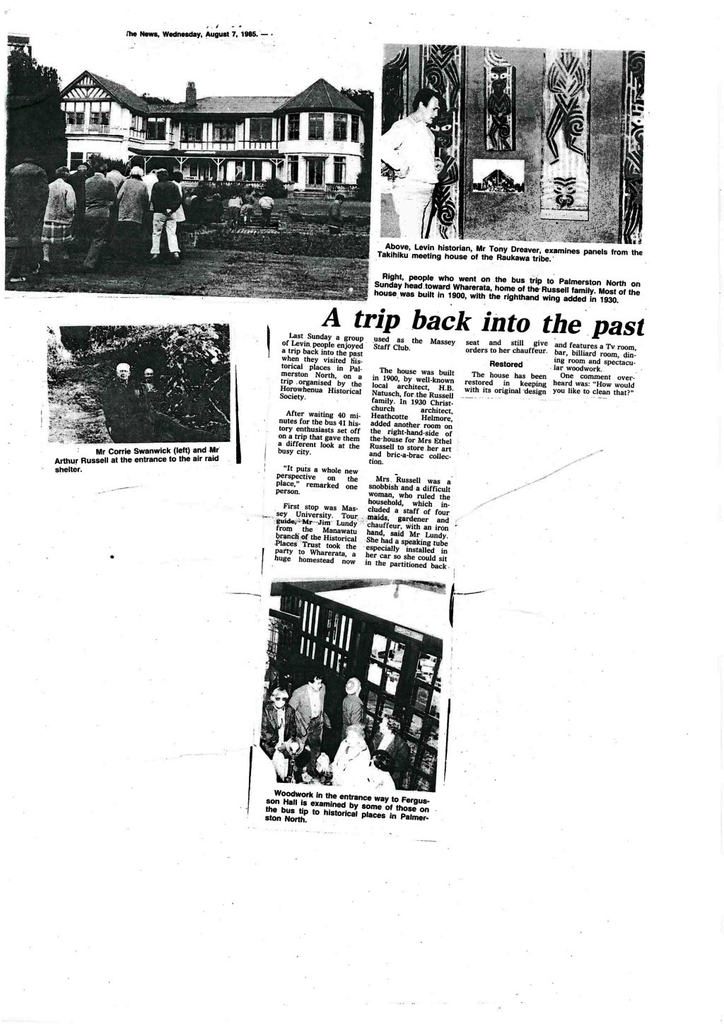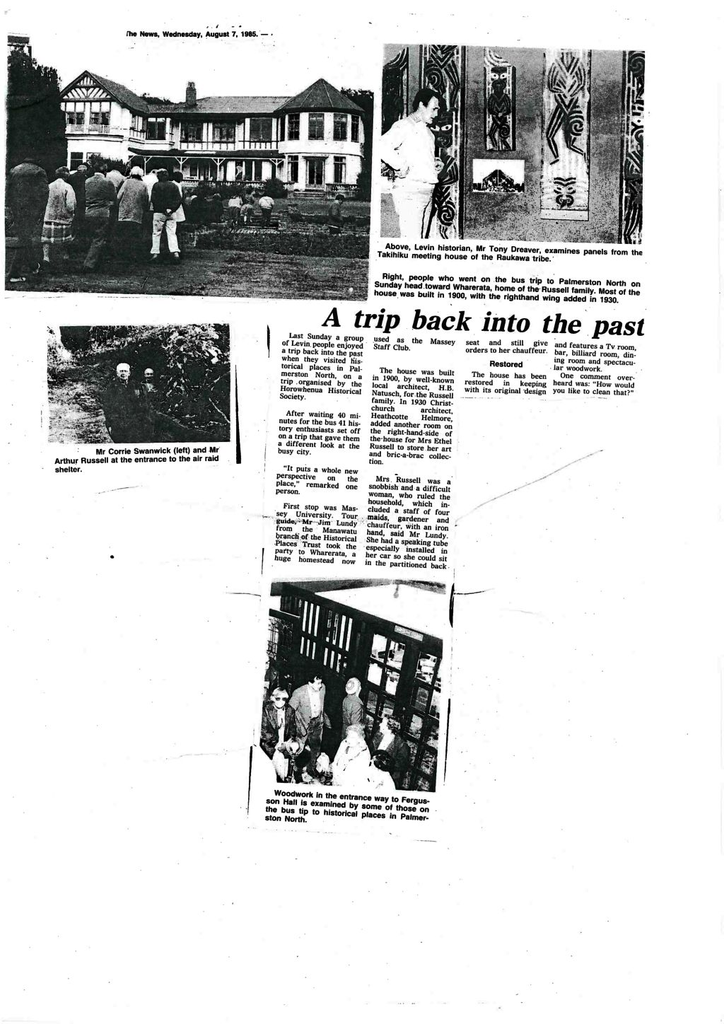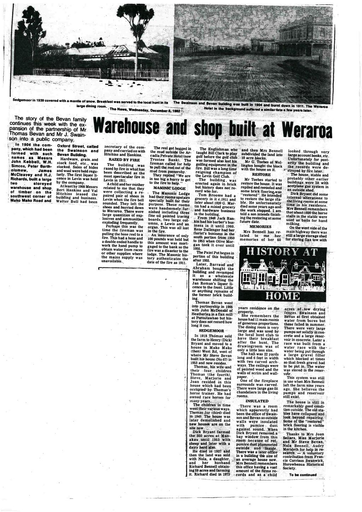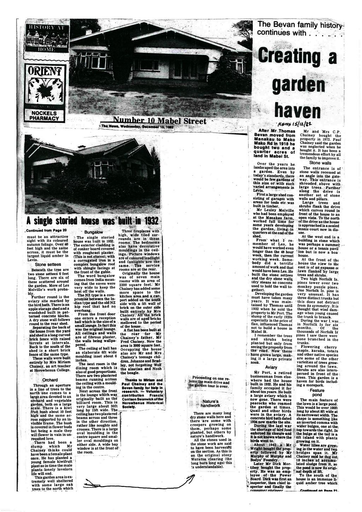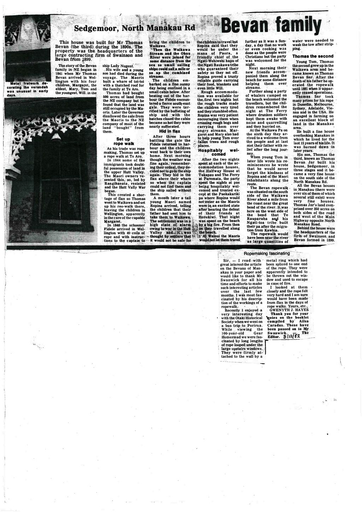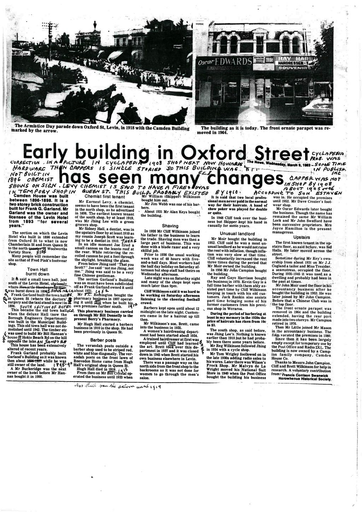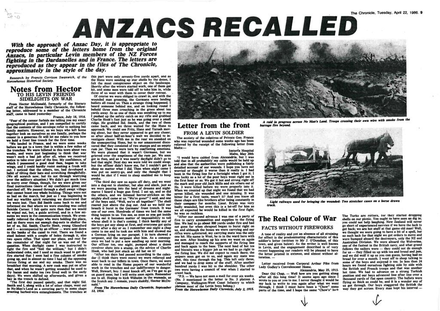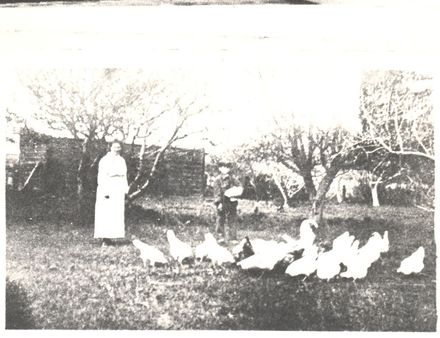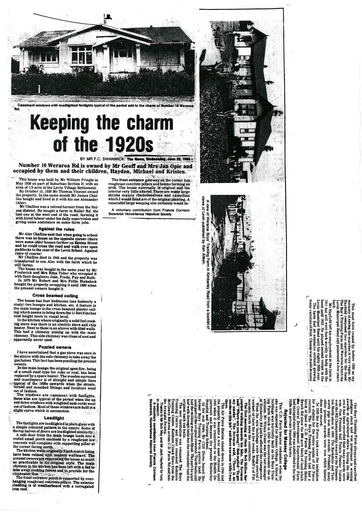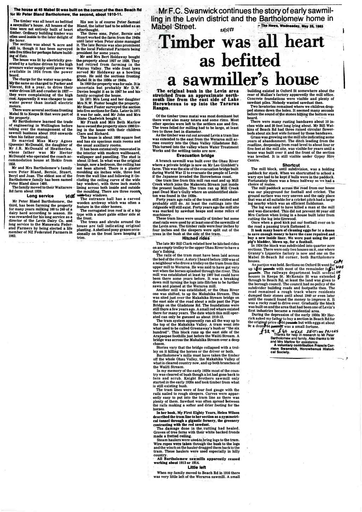A Trip Back Into the Past Enjoyed by Levin People
- Description
After waiting 40 minutes for the bus 41 history enthusiasts set off on a trip that gave them a different look at the busy city.
“It puts a whole new perspective on the place,” remarked one person.
First stop was Massey University. Tour guide, Mr Jim Lundy from the Manawatu branch of the Historical Places Trust took the party to Wharerata, a huge homestead now used as the Massey Staff Club.
The house was built in 1900, by well-known local architect, H.B. Natusch, for the Russell family. In 1930 Christchurch architect, Heathcotte Helmore, added another room on the right-hand side of the house for Mrs Ethel Russell to store her art and bric-a-brac collection.
Mrs Russell was a snobbish and a difficult woman, who ruled the household, which included a staff of four maids, gardener and chauffeur, with an iron hand, said Mr Lundy. She had a speaking tube especially installed in her car, so she could sit in the partitioned back seat and still give orders to her chauffeur.
Restored
The house has been restored in keeping with its original design and features a TV room, bar, billiard room, dining room and spectacular woodwork.
One comment over-heard was “How would you like to clean that?”
Wharerata was one of five houses owned by very wealthy people in the Massey area. Known as “The Set” these families were:
¨ The Russells at Wharerata
¨ The Bachelors at Willowbank
¨ The Monroes at Craig Lockhart (now Moginnie House, a university hostel)
¨ The Keelers at Atawhai (now also a hostel, Fergusson Hall)
¨ The Abrahams at Tiratea, which is also part of the university.
The house is divided in half – the vice-chancellor of the university lives in one part and records are housed in the other.
Next stop after Wharerata was Fergusson Hall, originally home of the Keeler family, descendents of the well-known jam-making Keelers.
The house was built in 1908 and was the scene of many “posh” events, said Mr Lundy. Today it is used for student accommodation and its impressive stairwell echoes with the sound of rock music, but in earlier days it was the scene of dignified balls and dances. In 1926 a wedding was held there and attended by 400 to 500 guests.
Shelter
A hundred metres from the entrance to Fergusson Hall is an air raid shelter burrowed into a bush clad hill. It is 25 metres square, made of steel and concrete and was built by Mr Brian Keeler, “just in case”.
Mr Keeler took the war very seriously, said Mr Lundy, and thought the shelter might be used as a command post. It was never needed.
Today there are several chairs stacked in one corner, some candles on the floor and students’ murals on the wall.
The group then moved on to visit the Hoffman brick kiln in Featherston St which is the largest of its kind in the southern hemisphere. The kiln is 110 feet long, 40 feet wide and 10 feet high. It has 14 chambers, and while it was in use there were 5000 bricks in each chamber, in various stages of firing. About 440,000 bricks were produced a year.
The kiln was built in the 1800s and was last fired in 1959. It closed down after the popularity of using bricks for building decreased. The Napier earthquake of 1931 destroyed all confidence in the brick industry, said Mr Lundy.
The kiln was fired continuously and producing the bricks was back-breaking work.
“The men who worked here worked very hard indeed,” Mr Lundy said.
Today the kiln is on property used by landscape contractors, David and Allan Muir, and the Levin group were the first busload to have been taken by Mr Lundy to visit the kiln.
Museum
Finally, it was on to the Manawatu Museum, which was specially opened for the party. Time was spend browsing over the exhibits which include a 16 metre canoe found at Tangimoana beach and a sleeping house made out of manuka, raupo, rushes and flax fibre twine.
A special display titled from Bush To Butter showed the development of the region through exhibits such as axes and saws used to break in the land to utensils for butter making.
Another feature was the skeleton of a moa, reconstructed from bones found in an Otaki swamp in 1983.
Identification
- Date
- August 7, 1985
Taxonomy
- Community Tags

